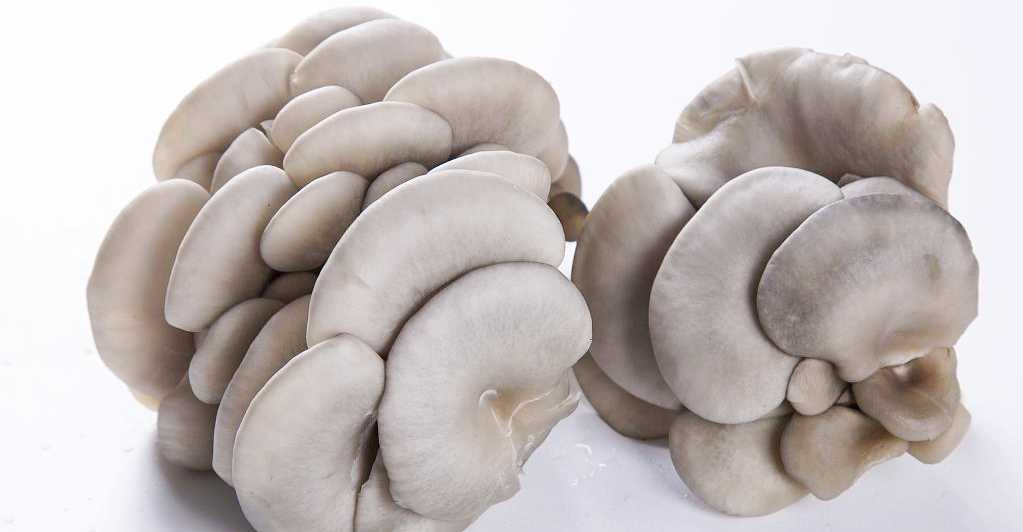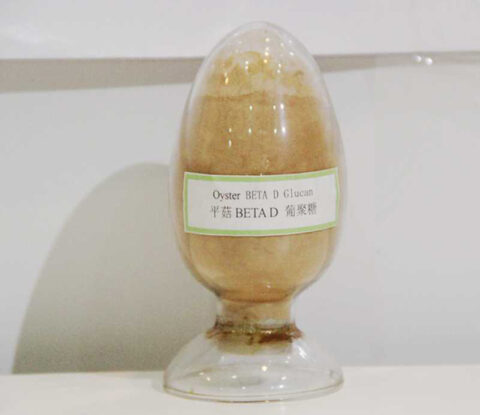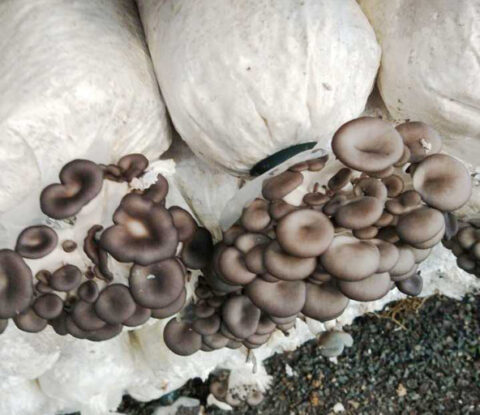
Oyster Mushroom Beta Glucan, Pleurotus ostreatus Extract Beta D Glucan powder, β-glucan 30%
Oyster mushroom polysaccharides not only have high purity and stability, but also contain abundant bioactive groups, such as hydroxyl and carboxyl groups, making them have broad application prospects in the fields of medicine and health products.
Oyster Mushroom Beta Glucan, Pleurotus ostreatus Extract Beta D Glucan powder, β-glucan 30%
【Botanical source】: Pleurotus ostreatus
【Extraction source】: Fruiting body
【Specification】: Beta d glucan, β-glucan 30%( tested by Magezyme reagent kit)
【Appearance】: Brownish yellow fine powder
【Particle size】: 95% pass 80 mesh size
【Indications of Pleurotus Ostreatus Extract】: The polysaccharides extracted from Pleurotus ostreatus also revealed β- The presence of pectin has been shown to enhance neutrophil killing activity against Candida albicans. The purification section also increased glucose absorption activity in L6 myotubes in a dose-dependent manner. Polysaccharides extracted from Pleurotus ostreatus enhance tumor necrosis factor α (TNF)- α) Inhibiting tumor growth with the level of nitric oxide (NO) demonstrates significant characteristics of immunostimulants. The sulfated polysaccharides extracted from Pleurotus ostreatus improve the inhibitory activity of plasma clots through endogenous and exogenous pathways. In addition, it was found that the cytotoxic activity was significantly reduced; This discovery suggests that polysaccharides from Pleurotus ostreatus can be considered as alternative drugs for anticoagulant therapy.
【Storage method】: Store in a cool and dry place
【Shelf life】: 24 months from production date
【Packaging】: 25kg/barrel (41 * 41 * 50cm), double layered food grade polyethylene bag inside

Pleurotus Ostreatus Beta Glucan Production Flowchart
Pleurotus ostreatus fruiting body – drying – crude powder (40 mesh) – enzymolysis – purified water extraction – centrifugal filtration – concentration – purification – spray drying – sieving 80 mesh – packaging – testing physical and chemical indicators – warehousing
Specification Sheet of Pleurotus Ostreatus Beta Glucan
| Product name: | Pleurotus Ostreatus Extract | ||
| Specification: | β-glucan 30% | ||
| Part used: | Frutingbody of Pleurotus ostreatus | ||
| Solvent used: | Hot water | ||
| Process: | Raw materials crushed, extracted, concentrated and spray-dried to powder | ||
| Non GMO according to regulation (EC) 1829/2003 and 1830/2003 or United States requirements. Non allergen according to Directive 2007/68 amending Annex IIIa to Directive 2000/13/EC and US Food allergen labelling and consumer protection act 2004. | |||
| Heavy Metals: | |||
| Lead: | NMT 3ppm | Cadmium: | NMT 1ppm |
| Arsenic: | NMT 2ppm | Mercury: | NMT 1ppm |
| Residual solvents: | Comply to USP | ||
| Pesticides residues: | Conform to Regulation USP<561> | ||
| Microbiology: | |||
| Total plate count: | 10000cfu/g Max | Yeasts and molds: | 1000cfu/g Max |
| E.coli: | Not detected in (g)10 | Salmonella spp.: | Not detected in (g)25 |
| Staphylococcus aureus: | Not detected in (g)10 | Clostridium spp.: | Not Present in 0.1 g of food |
| Organoleptic quality | Method | Specifications | |
| Aspect: | Visual : ( CQ-MO-148) | Powder | |
| Color: | Visual : ( CQ-MO-148) | Brownish yellow | |
| Flavor: | Sensory: (CQ-MO-148) | Characteristic | |
| Analytical quality | Method | Specifications | |
| Identification: | Magezyme reagent kit | Conform | |
| Loss on drying: | USP <731> | < 10% | |
| Bulk density: | USP <616> Method I | 40 – 60 g/100mL | |
| Particle size: | Analytical sieving || USP <786> | 100% through 80meshes | |
| Packaging suitable for foodstuff. | |||
Extended Reading
Chemical Composition of Pleurotus ostreatus
Phenols and flavonoids in Pleurotus Ostreatus extract
Secondary metabolites, such as phenol, flavonoids, and tannins, are collectively referred to as phenolic compounds and are known to have significant antioxidant properties. Rahimah et al. conducted a study on white Pleurotus Ostreatus/oyster mushroom to evaluate its antioxidant properties; The results showed that the total phenol content was close to 5.45-8.03 mg GAE (gallic acid equivalent)/g at different concentrations. The ABTS cationic radical reduction and hydrogen peroxide scavenging tests showed significant antioxidant activity at 108.07 and 229.17 mg/g, respectively. Egra et al. also conducted similar antioxidant capacity studies, which showed that in different solvent extractions, it ranged from 114.708 to 368.702 mg GAE/g. The total flavonoid and phenolic acid contents were the highest in n-hexane solvent, with 653.5 and 78.495 mg GAE/g, respectively. Pleurotus Ostreatus/oyster mushrooms grown in different regions exhibit high total phenolic content ranging from 302.95 to 586.60 mg GAE/g dry mass (dw), and total flavonoid content ranging from 50.79 to 77.54 mg QE/g dry mass. Therefore, it can be considered that Pleurotus Ostreatus/oyster mushroom exhibit a wide range of phenolic and flavonoid content.
Terpenes and terpenoid compounds in Pleurotus Ostreatus extract
Terpenes are naturally occurring compounds in plants and are the main component of plant essential oils, with medicinal value. Sterols are another type of terpenoid compound that is a fundamental component of eukaryotes. Koutrotsios et al. evaluated the presence of active compounds in different strains, which showed sterols ranging from 1.9% to 87.4%, followed by their metabolites ergoster-7-enol, ergoster-5,7-dienol, and ergoster-7,22-dienol (12.7%, 7.6%, and 6%, respectively). Souilem et al. also reported similar studies as they showed the presence of ergosterol content, i.e. 20 mg/100 g dry mass. Tagkouli et al. used gas chromatography-mass spectrometry to extract raw P Different types of terpenes have been identified in ostreatus. According to Prastiyanto et al., thin-layer chromatography analysis of the genus Pleurotus indicates the presence of terpenoids in Pleurotus Ostreatus/oyster mushroom has the potential to be used as an anticancer and antibacterial agent, particularly targeting Raji cells and methicillin-resistant Staphylococcus aureus (MRSA) strains. Research has shown that terpenes have strong antioxidant, anti-tumor, anti-inflammatory, antiviral, cytotoxic, insecticidal, and nematicidal activities.
Polysaccharides in Pleurotus Ostreatus extract
Mushrooms are α- Glucan β- An important source of polysaccharides such as pectin, heteroglycans, and proteoglycans. Recently, polysaccharides isolated from mushrooms have shown great potential due to their broad biological characteristics, such as antioxidant, anti-tumor, and anti-inflammatory effects. Polysaccharide peptides (PSP) and polysaccharide K (PSK) or Krestin found in Coriolus versicolor exhibit effective immune regulatory properties. The polysaccharides extracted from the gray Pleurotus Ostreatus/oyster mushroom also revealed β- The presence of pectin has been shown to enhance neutrophil killing activity against Candida albicans. The purification section also increased glucose absorption activity in L6 myotubes in a dose-dependent manner. P. Polysaccharides extracted from Pleurotus Ostreatus/oyster mushroom enhance tumor necrosis factor α (TNF)- α) Inhibiting tumor growth with the level of nitric oxide (NO) demonstrates significant characteristics of immunostimulants. The polysaccharides (PS) extracted from Pleurotus Ostreatus/oyster mushroom improved the inhibitory activity of plasma clots through endogenous and exogenous pathways. In addition, it was found that the cytotoxic activity was significantly reduced; This discovery suggests that Pleurotus Ostreatus/oyster mushroom polysacchrides can be considered as an alternative to anticoagulant therapy.
The pharmacological effects of Pleurotus Ostreatus
1. Antibacterial agents
Mushrooms are famous for their antibacterial, antifungal, and antiviral properties. Due to the presence of different fungal components, Pleurotus Ostreatus/oyster mushroom exhibit strong antibacterial activity. Ahmed et al. conducted antibacterial and antifungal activities on shiitake mushrooms, showing significant inhibitory effects on pathogenic microorganisms. They concluded that methanol extracts exhibited high activity, followed by acetone and petroleum ether extracts. The polar extract of Pleurotus Ostreatus/oyster mushroom(PoPE) has effective inhibitory effects on Staphylococcus aureus (20 mm), Candida albicans (18 mm), Escherichia coli (16 mm), and Mycobacterium luteum (12 mm). As the concentration of the extract increases (25-100 μ L/mL significantly increases the inhibitory effect on bacterial growth. In addition, Pleurotus Ostreatus/oyster mushroom extract showed inhibition of Fusarium oxysporum (47%), Fusarium solani (28%), and Rhizoctonia solani (21%). The antifungal activity of Pleurotus eryngii culture filtrate against Trichophyton rubrum was measured using disk diffusion method. Compared with the control group, all tested concentrations of ethanol extracts significantly affected the growth of Trichophyton rubrum, and the effect also increased with the increase of concentration. The highest inhibitory zone was 18.66 mm (25 mg/mL), followed by 11.83 mm and 7.16 mm, with concentrations of 12.5 and 6.25 mg/mL, respectively. The results also indicate that ethanol extract is more effective than the antifungal drug clotrimazole. From the above research, it can be seen that due to the increasing global attention to bacterial resistance and antibiotic abuse, Pleurotus Ostreatus/oyster mushroom extract seems to be a more feasible method for antibacterial activity.
2. Antitumor
Compared to other mushrooms, Pleurotus Ostreatus/oyster mushroom exhibits cytotoxic effects; The water-soluble proteoglycan compounds from the mycelium of this species have anti-tumor and immunomodulatory effects. A cohort study by Zhang et al. on mushroom consumption in Japan and the risk of prostate cancer suggests that habitual consumption of mushrooms may help reduce prostate cancer, as it has been reported that L-ergothione is abundant in the Pleurotus Ostreatus/oyster mushroom. Haque et al. studied human breast cancer cells (MCF-7) and analyzed the anti-tumor activity of the purified extract of Pleurotus highking. Evaluate cell proliferation through colony formation assay and cell viability through MTT assay. The results showed that by maintaining a balance between pro apoptotic and anti apoptotic genes, it has strong anti-cancer activity. Mishra et al. conducted a study analyzing the effectiveness of ethanol assay on the growth and proliferation of MCF-7 using different measurement methods such as presto blue activity assay, sulfamethoxazole rhodamine (SRB) assay, cell apoptosis assay, molecular docking, and cancer cell nucleus morphology examination. The results indicate that Pleurotus Ostreatus/oyster mushroom inhibits the growth and proliferation of MCF-7 cells, induces cell contraction, membrane foaming, and nuclear fragmentation, leading to malignant cell apoptosis and significant anti-cancer activity. Molecular docking analysis showed that ethyl linoleate, ergoste-5,7,9 (11), 22-tetraene-3-ol, stigmaster-5,22-diene-3-ol, acetate, ergoste-5,7,22-diene-3-ol, and γ- Sitosterol and epidermal growth factor receptor, progesterone receptor, and nuclear factor κ B (NF- κ B) Cancer target proteins such as proteins have good binding affinity. It can be concluded that due to the presence of storage facilities for essential elements and bioactive compounds, Pleurotus Ostreatus/oyster mushroom exhibits excellent anti-cancer properties.
3. Anti hyperlipidemia
Pleurotus Ostreatus/oyster mushroom polysaccharide has anti epidemic effect on liver injury induced by high fat and cholesterol lotion in mice. The results showed that Pleurotus Ostreatus/oyster mushroom polysaccharides with a dry weight of 400 mg/kg had a significant effect on reducing low-density lipoprotein (LDL), total cholesterol, total triglycerides, and increasing high-density lipoprotein (HDL); Mushrooms can be used as functional foods for oxidative stress and anti hyperlipidemia. A similar study conducted by Amirulla et al. investigated the levels of total cholesterol and triglycerides in hyperlipidemic rats. The results showed that after high-dose (500 mg/kg dry mass) treatment of Pleurotus Ostreatus/oyster mushroom ultrasound extract, the levels of total cholesterol and triglycerides decreased by 2.20 and 0.41 mmol/L, respectively. The high-density lipoprotein of these rats increased to 2.24 mmol/L. In summary, the results of this study confirm that the ultrasound extract of Pleurotus Ostreatus/oyster mushroom has lipid-lowering, antioxidant, and anti-inflammatory activities in rats. Research has shown that Pleurotus Ostreatus/oyster mushroom can be used as a preventive strategy for obese men to lower blood pressure, total cholesterol (12%), and low-density lipoprotein (19%) after consuming 3g daily for 90 consecutive days. Similarly, Khatun et al. found that after the first intervention, triglycerides and total cholesterol decreased by 28% and 8%, respectively, but the levels increased again after one week of not consuming Pleurotus Ostreatus/oyster mushroom. The promising activity of Pleurotus Ostreatus/oyster mushroom indicates their potential application as functional foods and nutritional supplements to alleviate various inflammations.
4. Anti diabetes
Diabetes (DM) is a group of multiple diseases, which develops due to insulin impairment, resistance or both. Although the management and treatment of diabetes have made progress, the prevalence rate continues to increase, which leads to the development of diabetes complications, and ultimately leads to incidence rate and mortality. Therefore, new therapies with fewer side effects are attracting the attention of many people. In traditional medicine, mushrooms are used as remedial measures to control blood sugar and diabetes complications, without side effects. The dietary supplements containing Pleurotus Ostreatus/oyster mushroom and Lentinula edodes in streptozotocin induced rats showed that compared with untreated diabetes rats, fasting blood glucose levels α- Amylase α- The activities of glucosidase, ACE, and arginase were significantly reduced. Strengthening the diet with mushroom powder has shown significant benefits in reducing postprandial blood glucose levels and impaired glucose tolerance, as well as reducing non esterified free fatty acids. A similar study conducted by Shamtsyan et al α Amylase activity reveals anti diabetes characteristics. It can be seen from the above studies that Pleurotus ostreatus has anti diabetes properties, which is one of the potential strategies of new drugs.
Reference:
DEVI P V, ISLAM J, NARZARY P, et al. Bioactive compounds, nutraceutical values and its application in food product development of oyster mushroom[J]. Journal of Future Foods, 2024, 4(4): 335-342. DOI:10.1016/j.jfutfo.2023.11.005.
One Response to Oyster Mushroom Beta Glucan, Pleurotus ostreatus Extract Beta D Glucan powder, β-glucan 30%
Leave a Reply
You must be logged in to post a comment.





nice post